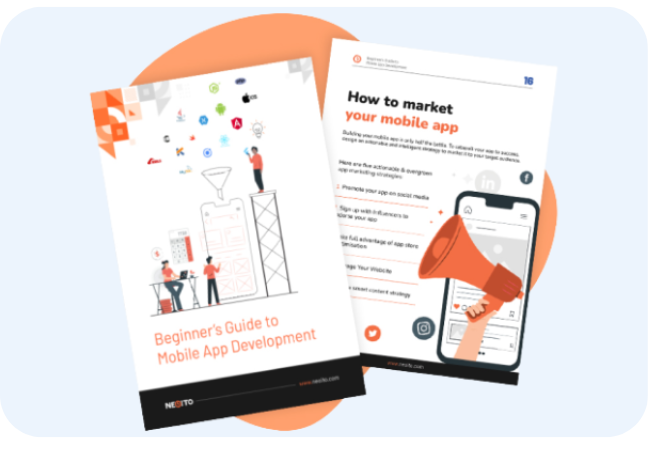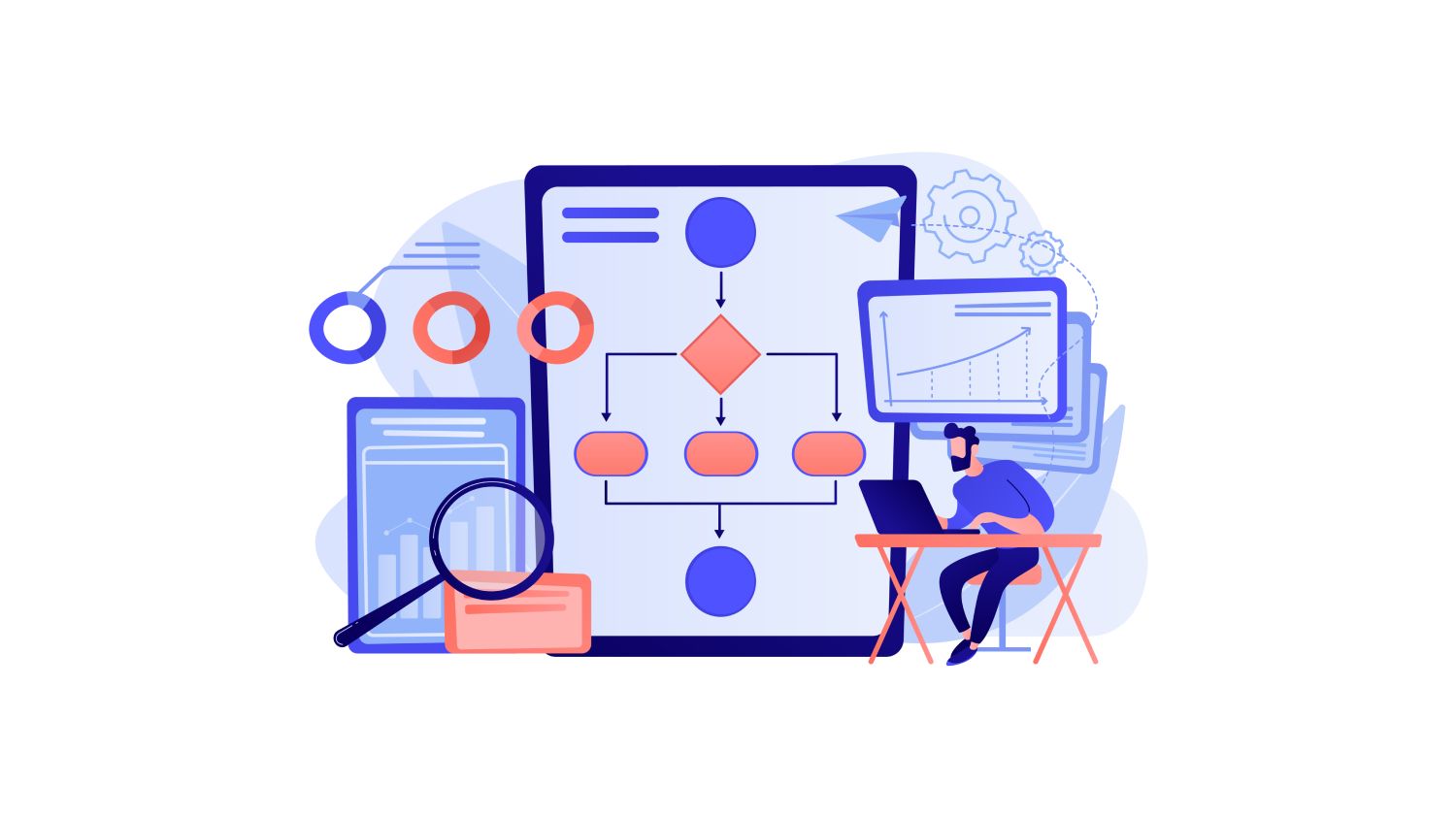Choosing the right framework is a critical step in developing a mobile application. But with the plethora of frameworks out there, it can be quite a daunting job. In this blog, you will learn how to choose the best framework to develop your app and the most popular frameworks.
Let’s get started!
What is Mobile App Development Framework?
Developers use a set of tools and resources to build apps. These tools and resources are called a framework.
A mobile app development framework is a medium that develops software, debugging tools, and programming interfaces.
Why do you need a framework?
Businesses rely heavily on mobile apps to increase conversions. The competition among the apps is growing every day. Only a high-performing mobile app can help you stand out from your competitors.
Mobile app development platforms let you build top-notch apps compatible with Android, iOS, and Windows devices.
Here is how you can frame things more quickly to develop your dream app.
-
-
- Choose your app idea
- Fix your development cost
- Decide if you want to build an app for Android or iOS or a cross-platform app
- Set your memory options and security settings
- Select the library and widget you want in your app
- Choose your feasible development framework to build your app
-
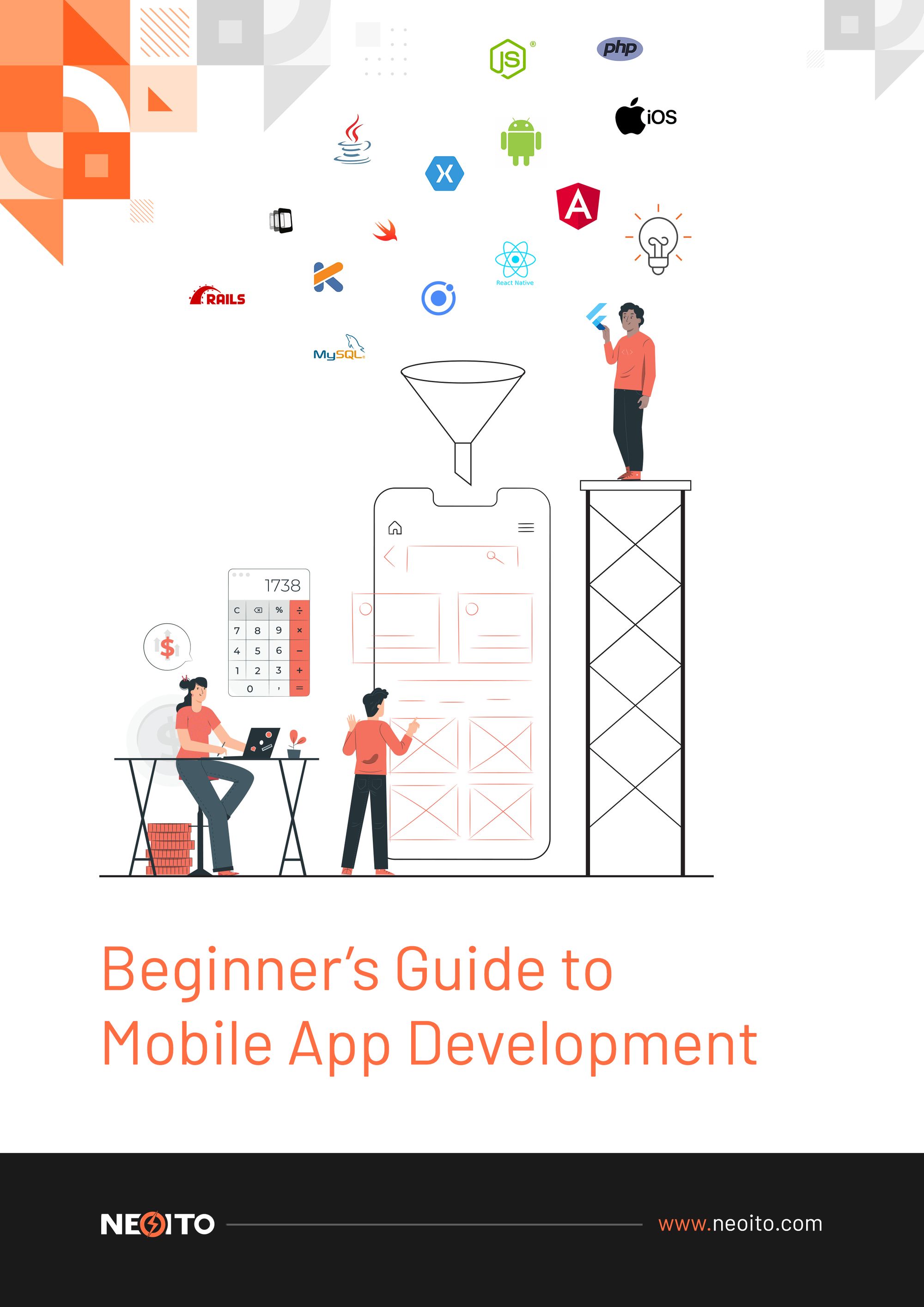
Free Download
A Complete Guide to Mobile App Development
What is Next.js?Factors to consider while choosing a mobile app development framework and tools
Usually, you don’t like long, complicated processes, right? Yes, you don’t want to be left on the island of confusion either. App development companies now listen to the customers and offer single swipe solutions.
People aim to resolve things in a flip of a second. Look at some factors to keep an eye on while choosing your mobile app development framework.
Time consumption
It should be less. Normally people hate processes that take too long for completion. Implementing the required functionalities and delivering the product within the stipulated time is the best thing a framework can offer you. The lesser the time taken during the development, the more cost you can save. Choose a framework that doesn’t eat up much of your time.
Developer-friendliness
This is one important element you could keep in your list first while choosing a framework. Complexity in developing an app affects the time management and delays the development, which in turn hinders the product release. It also makes your finalised budget climb up. Choose a developer-friendly framework to have a smooth headway to the final product.
Scalability
This is yet another requirement. Prefer a scalable mobile app development framework which is flexible when your user base grows. The growing customer base shouldn’t affect the user experience. It should extend support for a large range of users’ requests per minute(RPMs) as the app demand expands.
Speed
Speed is the chief factor to be prioritised as it directly impacts app performance. In most of the apps, speed is an essential element. A speedy experience keeps your users on the app. On the other hand, your users won’t be impressed if they have to wait longer to load your app. So, go for a framework that is faster and suits your app requirements.
Development cost
Cost of development is an important factor and the framework you choose should fit your budget. Choose a cost-effective development framework if you’re on a tight budget and ensure that you’re only adding the essential features to your app.
Security strength
Security strength should also be your consideration while choosing a development framework. While developing your app, consider enabling safety from obscure breaches and unknown source intrusion.Wi-Fi and Mobile data are highly subjected to security risks. Choose a platform which promises security and adequate speed. For example, the payment gateway on your app should be confined from risk sources and it should pass the vulnerability and penetration test.
Quality outcome
Quality outcome is another factor. Better quality apps can hold a large customer base. The quality aspect can strengthen your app’s UX and easily get you new customers. Poor quality can affect the overall app performance. So go for a framework that offers a seamless and quality experience at every touchpoint.
Three Types of Apps
Native App is a software developed and used on a specific platform or mobile device. Native apps offer faster speed than web apps and can work offline.
Unlike web apps, Native apps can provide optimised performance across different mobile devices and utilise the latest technologies.
A Web App is an application that runs only with internet service and needs a browser to run. Web apps are functional in browsers like Chrome, Firefox and Internet Explorer.
Hybrid App is a fusion of both native apps and web apps. It comes with features of both native and web apps.
Also Read: How to Choose the Best—Native vs Hybrid App
Top Mobile App Development Frameworks
Here are 10 mobile app development frameworks in comparison to each other.
1. React Native

React Native is a cross-platform app development JavaScript framework for mobile apps. It comprises several features making it one of the most preferred frameworks for mobile app development.
Pros
- It consumes significantly less time and memory
- Provides highly-efficient response in the output
- It supports iOS and Android platforms
- Known for optimal performance
- Can reuse the codes and pre-developed components
- Large developer community
- Advantages of live and hot reloading
- React Native is cost-effective
- It offers a simple user interface
- Supports third-party plugins
- Provides handy solutions and libraries
Cons
- Long initialisation time
- Learning difficulty
- Lack of security
- Inefficient memory management
Also Read: Top 12 Reasons to Use React Native For Your Mobile App Development
2. Flutter

Flutter is a dart-based, free and open-source UI toolkit of Google. It develops natively compiled applications for various platforms like mobile, web, and desktop from a single codebase.
Pros
- Custom UI widgets
- Single codebase system
- Hot reload features
- Native App like performance
- Less testing requirement
- Less development cost
- Performance boost
Cons
- Requires Dart programming learning before using Flutter
- A limited set of libraries
- Weak iOS supporting features
- It doesn’t support Android and Apple TV
Read More: Why Flutter is the Future of Cross-Platform Development
3. Ionic
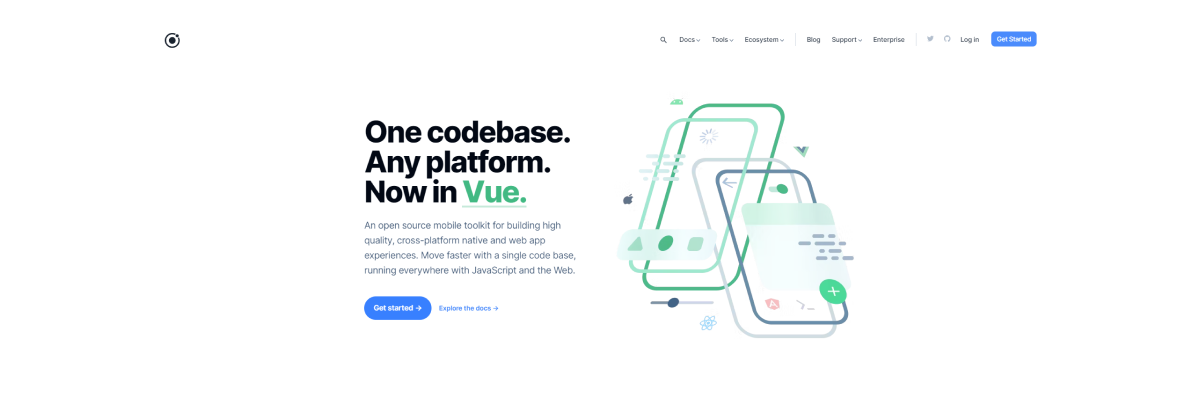
Ionic is a complete open-source hybrid mobile application development framework. It uses web technologies to develop high-performing and customised mobile apps.
Ionic is a Wrapping Angular Framework. Ionic gains access to host operating features such as Camera, GPS, Flashlight etc. It enables native and cross-platform applications. It is easily manageable, scalable and easy to read.
Pros
- Single code programming language for all mobile OS
- Easy adaptability
- Cross-platform compatibility
- Attractive user interface
- Easy app testing
- Huge community interaction
Cons
- Lacks native app performance
- Slow reloading performance
- Plugin dependency
- Poor security and compatibility issues
- Heavier than Native apps
4. Xamarin
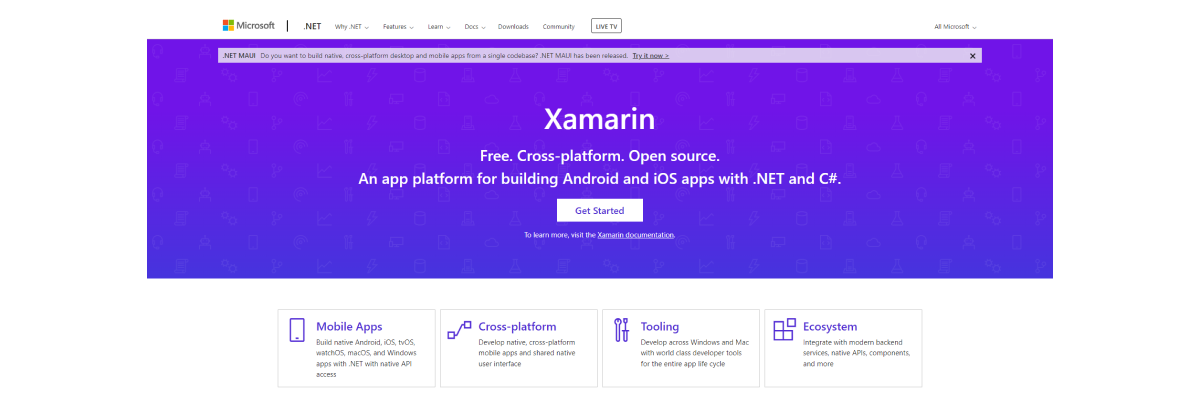
Xamarin is a free open source cross-platform. App creators use Xamarin with native UI in creating Native apps for mobile devices and desktop devices. Xamarin helps build apps for Android, iOS, tvOS, watchOS, macOS and Windows. This platform the .NET is extended with tools and libraries.
Pros
- Diagnostic tools feature
- Simplified maintenance
- The component store provides a lot of components
- Compatible with various devices and supports smart apps like Apple Watch and Android Wear
Cons
- Large-sized application
- Lacks community support
- A limited set of libraries
- Unsuitable for heavy graphics apps
- Minimal community support
- Poor support for apps with complex UI
- The application size is large and development is quite expensive
- It lacks security for third-party plugins
- Time-consuming and not mobile-friendly
5. Swiftic

Swiftic is yet another no-code mobile app development framework introduced and used specifically on iOS. Swiftic comes with a user-friendly app development interface to create, market, manage, gauge analytics and promote the app.
- Hassle-free app publishing experience
- Provides CMS integration
- Customisable app development
- Click-to-call feature for instant customer connectivity
- Provides third party integration
- Visually appealing app development
Cons
- Poor team management attributes
- Lacks location-based features
- Design options are limited
- No support for Windows mobiles
- Expensive app builder
- No API options
- Remote customer service
- Limited style changes
6. NativeScript
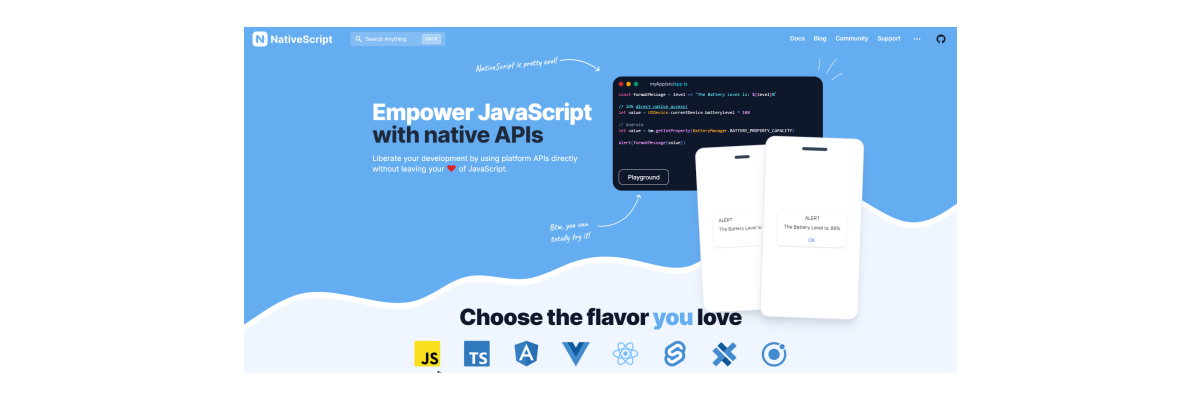
NativeScript is a JavaScript open-source framework for creating mobile apps on Apple iOS and Android platforms. This platform is packed with UI styling, interactions, connectivity, scalability, Native API access, and several advanced features.
Pros
- Access to the entire native API
- Faster execution
- Support for native iOS & Android libraries
- Provides powerful data visualisation with native UI tools
Cons
- Limited availability of free user interface components
- The large-sized application requires Mac for iOS app development
- Poor documentation
- Lacks precise description of the environment
- No hot reload
7. Corona SDK

Corona SDK is a cross-platform framework for game creation and app development for mobile and desktop devices.
Pros
- Lua-based platform, a powerful & lightweight scripting language
- Various range of animation and networking functions
- Optional pricing plans (monthly and yearly)
- It helps in building cross-platform apps for iOS and Android
- Using Sublime with the Corona editor is free
- Faster development process
- Offers multiple plugins for all needs
- Provide strong API support to integrate with any native library
Cons
- Isolated framework
- Based on Facebook changes, the Facebook API is a bit tricky and slow to update
- The simulator version supports only Mac
- Pricey options
8. Mobile Angular UI
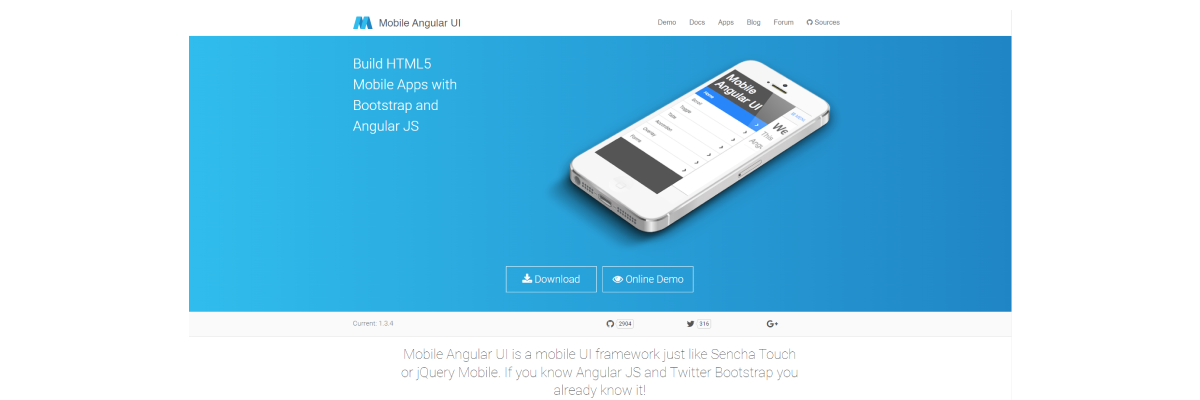
Mobile Angular UI is a mobile user interface framework for developing HTML 5 mobile apps that combine AngularJS and Bootstrap. This framework delivers high-quality mobile apps similar to that of web apps having various units with customisable features.
Pros
- Availability of plenty of UI components
- Faster runtime performance
- The developers receive regular Angular experience and possess overlays, switches, sidebars, scrollable areas, etc
- Helps build fully responsive interfaces with a super-small CSS file
Cons
- Poor documentation
- Requires server-side authentication and authorisation for app security
How can NeoITO help?
Choosing the best mobile app development framework for your project can be tricky. But an expert team like NeoITO can help you choose the right platform that aligns with your business goals.
At NeoITO, we develop high-performing apps for businesses like yours to help them scale faster and attract funding from top-tier investors. We have a top-ranked web and mobile app development team that successfully delivered 100+ projects across different industries. Contact us now if you have a project in mind.

